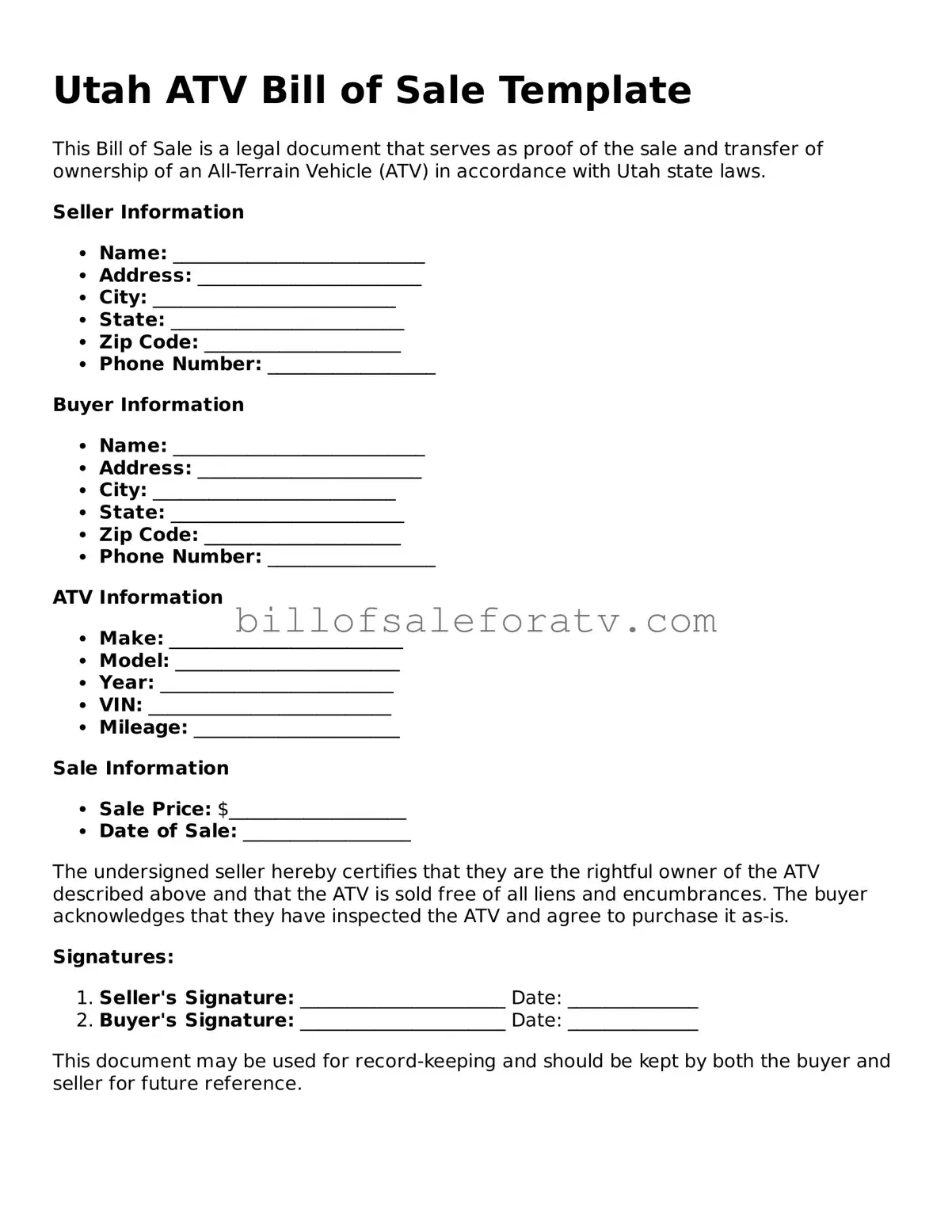Utah ATV Bill of Sale Template
The Utah ATV Bill of Sale form is a legal document that records the sale and transfer of ownership of an all-terrain vehicle in Utah. This form provides essential information about the buyer, seller, and the ATV itself, ensuring a clear transaction. To facilitate a smooth transfer, consider filling out the form by clicking the button below.
Customize Form Now
